2020 Year-End Letter from Peter Gruss
Dear Friends, Colleagues and Members of the OIST Community,
As we head into the New Year Holiday, I would like to extend my deep appreciation to every member of the OIST community for your hard work and dedication during such an unprecedented period. Last year, I wrote that every year of the decade ahead is likely to bring twelve months of non-stop challenge, and 2020 certainly lived up to this prediction. However, despite these challenges—both expected and unexpected—OIST has continued to excel in the pursuit of our institutional mission. We have celebrated many remarkable achievements, navigated several notable transitions, and have remained steadfast in developing the foundation needed to meet our vision for the future. As we near the close of 2020, never before have I been as proud to serve as the President and CEO of such a driven and resilient Graduate University.
COVID-19
This year has become synonymous with the COVID-19 pandemic; it took us all by surprise and affected the lives of everyone, worldwide. Here at OIST, the first wave halted personal and professional travel along with visitors of all types, isolating us all. From April 21 to May 18, we reduced our operations significantly in response to emergency declarations from the national and prefectural governments. In an abundance of caution, our Tedako Child Development Center (CDC) had an additional closure during the second week of October. However, every one of you rose to meet these challenges. You worked hard to ensure our continued momentum—adapting all we do to this new normal and becoming far more familiar with Zoom than ever before—while also contributing extensively to the fight against COVID-19 within Okinawa. A special thank you must also be extended to our administrative staff—notably HR, IT, and Finance—as well as to our CDC teachers for their exceptional support.
Remarkably, we managed to keep our campus free from COVID-19 for over seven months, from the day the first case was diagnosed in Okinawa to the day the first case was diagnosed within our own OIST community. Since then, we have only had six identified cases within the OIST staff, one identified before they even arrived in Okinawa. For the five who were in Okinawa, swift contact tracing and testing—along with your continuous efforts to follow all COVID-19 prevention guidelines—prevented any clusters from forming on campus. This in and of itself is something to be celebrated and would not have been possible without the diligent work of our Health Team, led first by Tomoari Mori and then by Hiroyuki Tahara; our PCR testing team, led by Mary Collins; our Emergency Response Coordinator Koji Fukuoka; and our Emergency Response Committee.
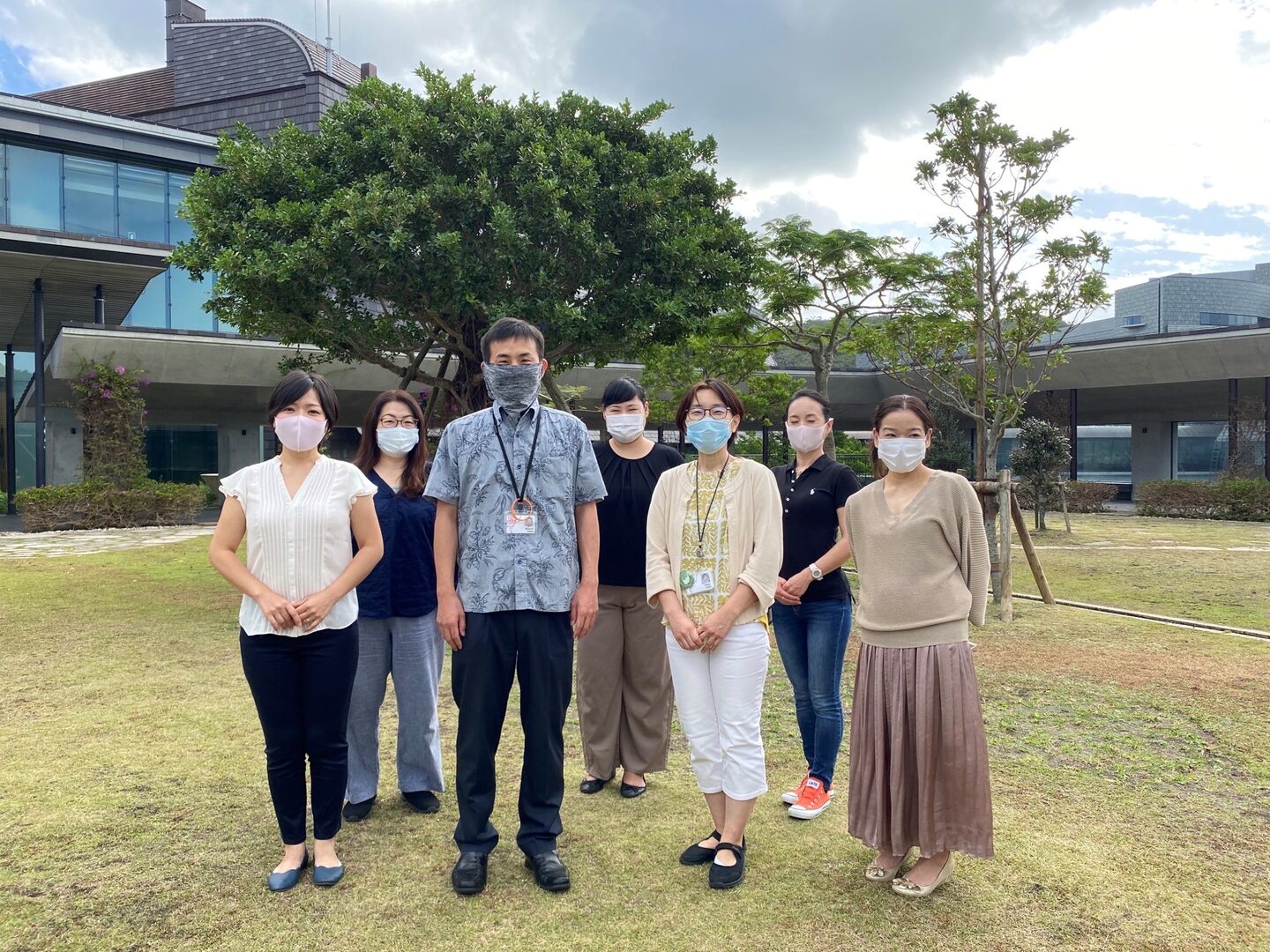
I was also thoroughly impressed by the number of projects our researchers organized to support our friends and neighbors in Okinawa as soon as it became apparent that the pandemic was taking hold here. The Pigolotti Unit provided early predictions of how this virus could spread in Okinawa if unchecked; the Kitano Unit contributed to the COVID-19 disease mapping project; and the CPR Team made educational videos for local children who were suddenly learning from home. A group led by students Sébastien Lapointe and Sandrine Burriel produced an alcohol-based gel for Onna Village and Chubu Prefectural Hospital; research technicians Micheal Grunwald and Kazumi Toda-Peters and Junior Research Fellow Paul Hsieh-Fu Tsai made 3D-printed face shields for distribution by the Okinawa Prefectural Government (OPG), the Dani Unit built UVC sterilization units for hospitals throughout the prefecture, and the Bandi Unit came up with a recently published and highly inventive method of fabricating effective face masks on the N95 mask principle using a cotton candy machine. Mahesh Bandi is also assisting research teams at WHO’s headquarters to help model the global spread dynamics of the COVOD-19 virus.
With further research, the Shen Unit has now developed a low-cost chip to detect COVID-19 antibodies; the Rosti Unit has taught us more about how far respiratory droplets can travel; the Froese Unit is looking into how the pandemic is affecting our human experience; and the Pääbo Unit has revealed a gene cluster on chromosome 3 that affects how we experience a COVID-19 infection.
OIST is deeply rooted within Okinawa, and during 2020 nowhere was this more clearly evident than in our response to COVID-19. Most notably, we have contributed to Okinawa’s testing capabilities. From the beginning of this pandemic, I have emphasized the importance of testing within this prefecture to prevent further spread of this virus and to support the economy. To assist with these necessary efforts, we have set up an incredibly effective and award-winning PCR testing lab, which has not only run approximately 2,800 tests within our own community, but has provided approximately 3,600 external PCR tests to date, sent to us primarily from the Hokubu, Miyako, and Yaeyama Public Health Centers, so we could directly help the prefecture expand testing capabilities within the more remote communities of Northern Okinawa and the smaller islands. The Wolf Unit established a reliable antibody test. Working alongside Dr. Masashi Narita, an infectious disease specialist at Chubu Prefectural Hospital, Wolf’s team confirmed this test’s accuracy using known samples, then ran a COVID-19 antibody testing survey within OIST and began testing on behalf of the prefecture. To date they have received and analyzed 1,111 samples from the Okinawan community and expect to receive an additional 650 samples by the end of this month.
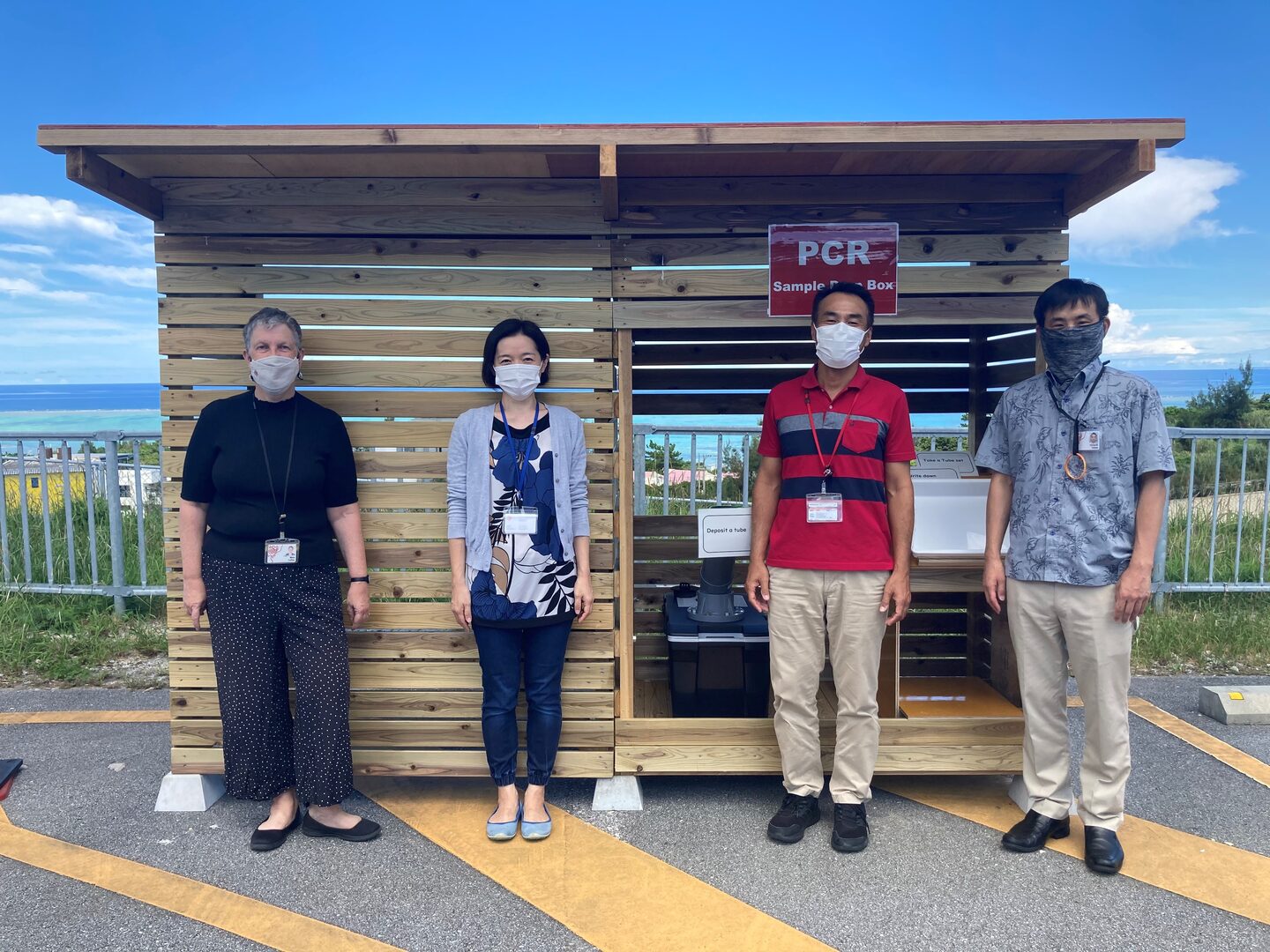
Looking ahead to 2021 and beyond, OIST has pledged to analyze at least 6000 antibody tests within Okinawa, and we are wrapping up our first prefectural PCR testing program, with plans to begin a new testing project with OPG next year. We are also taking part in a PCR testing accuracy management survey run by the Ministry of Health, Labour and Welfare, which will review approximately 600 testing sites around Japan. The results of this survey will be available to the public in January 2021 along with a manual for accuracy control based on these findings. For these efforts, we have received letters of thanks from OPG and Governor Denny Tamaki.
Your care and dedication have made an extraordinary difference, not only here at OIST, but within Okinawa and beyond. Recognition of OIST has increased dramatically this year, and because of you, we have built a reputation as a valuable and caring member of the Okinawan community and a leading contributor to global COVID-19 research.
Campus Update
This year has also brought change within our executive management. As you know, Jonathan Ray, our former Vice President for Communication and Public Relations, chose to return to his home and family in the United Kingdom this year. I will miss him and consider him the most talented communications professional I have worked with in my career. Tim Dyce also relocated with his young family to live and work in Cambridge after nine years at OIST. His work truly created a solid foundation for IT at OIST, forging the solutions and infrastructure we have needed from Lab 1 to Lab 4 and beyond. Recruiting for these two positions is ongoing, and once we have appointed new people, I will write to you all to introduce them.
As with every year, several members have joined our Board of Governors (BOG) and Board of Councilors (BOC). Akira Yoshino is the newest member of the BOG, while Jerome Friedman and Kiyoshi Kurokawa have stepped down. Sadly, Akito Arima, Co-Chair of the BOG since the founding of OIST, very recently passed away at the age of 90. Joining the BOC this year are Faisal Mahmood, Miki Fuchibe, Yumi Kuwana, Daisuke Kan, Jenifer Rogers, Yuichiro Anzai, and Kenji Govaers, while Yoshiharu Doi, James Lee O’Riordan, Yoko Aniya, Fuji Takayasu, Eriko Wauke, Tisato Kajiyama, and Philip Yeo have stepped down. I look forward to working closely with these new members and have thoroughly appreciated the invaluable efforts of these departing members during their terms of service.
This year has been a year of incredible growth for OIST. We have added 16 new units, welcoming Artur Ekert, Philipp Höhn, Filip Husnik, Tomomi Kiyomitsu, Vincent Laudet, Gene Myers, Akimitsu Narita, Svante Pääbo, Marco Edoardo Rosti, Daniel Spector, Liron Speyer, Hiroki Takahashi, Kazumasa Tanaka, Emile Touber, Jason Twamley, and Xiaodan Zhou to our faculty.
We also expanded the Ombuds Office with the addition of Mariko Yamazaki as Assistant Ombudsperson, broadening the scope of the essential work Ombudsperson Jeff Wickens and Associate Ombudsperson Evan Economo do to provide an extra source of confidential advice and knowledgeable assistance, supplementing our formal processes, independent legal helpline, and the expert counselling services of the Ganjuu Wellbeing Service.
April 1 marked the completion of Lab 4 as well, and many of our administrative leaders are now based there along with 20 units, with the capacity to house 4 more. We were unable to hold a formal inauguration event due to the social distancing restrictions of COVID-19, but I would like to extend my sincere gratitude to every person who helped with the construction, fit out, and relocation involved in the opening of our newest building.
Our growth continues. Construction of Lab 5 is already underway, and the CDC has expanded to meet the needs of our increasing number of families, so much so that the governance and management structure was updated this year. Despite travel restrictions, we were able to welcome 20 new students from within Japan in September, and 42 more are on their way in January, when we plan to hold a formal, yet socially distanced, welcome ceremony. I look forward to any occasion to celebrate our graduate students who come from all over the world to study within an environment that breaks down the disciplinary barriers often found within scientific research. To that end, though we postponed the graduation ceremony this year to protect the health and safety of our graduates and their families, this important event should not be delayed any further. Next year we will host a ceremony that will recognize and support our new graduates in the best way possible based on the state of COVID-19 in 2021.
Awards and Achievements
We have celebrated many notable achievements this year, many in the last few months alone. In September, Assistant Professor Hiroki Takahashi and Team Leader Yuimaru Kubo from the Konstantinov Unit were awarded Moonshot Research and Development grants to support their work on the realization of a fault-tolerant universal quantum computer that will revolutionize the economy, industry, and security by 2050. In October, the House for Sustainable Living—a collaboration between the Kintano Unit, Misawa Home Institute of Research and Development Co. Ltd., and PUES Corporation—received the DIA “Young Talents Award” in celebration of its exemplary design. In November, Professor Tsumoru Shintake and the OIST Wave Energy Converter Team were awarded the Energy Globe Foundation’s prestigious National Energy Globe Award Maldives 2020 for their pioneering approach to sustainable energy. And only earlier this month, our Graduate School Team won the Student Recruitment Campaign of the Year Times Higher Ed Awards Asia 2020 for work that tripled the PhD application pool, attracting over 1500 students during our last recruitment cycle.
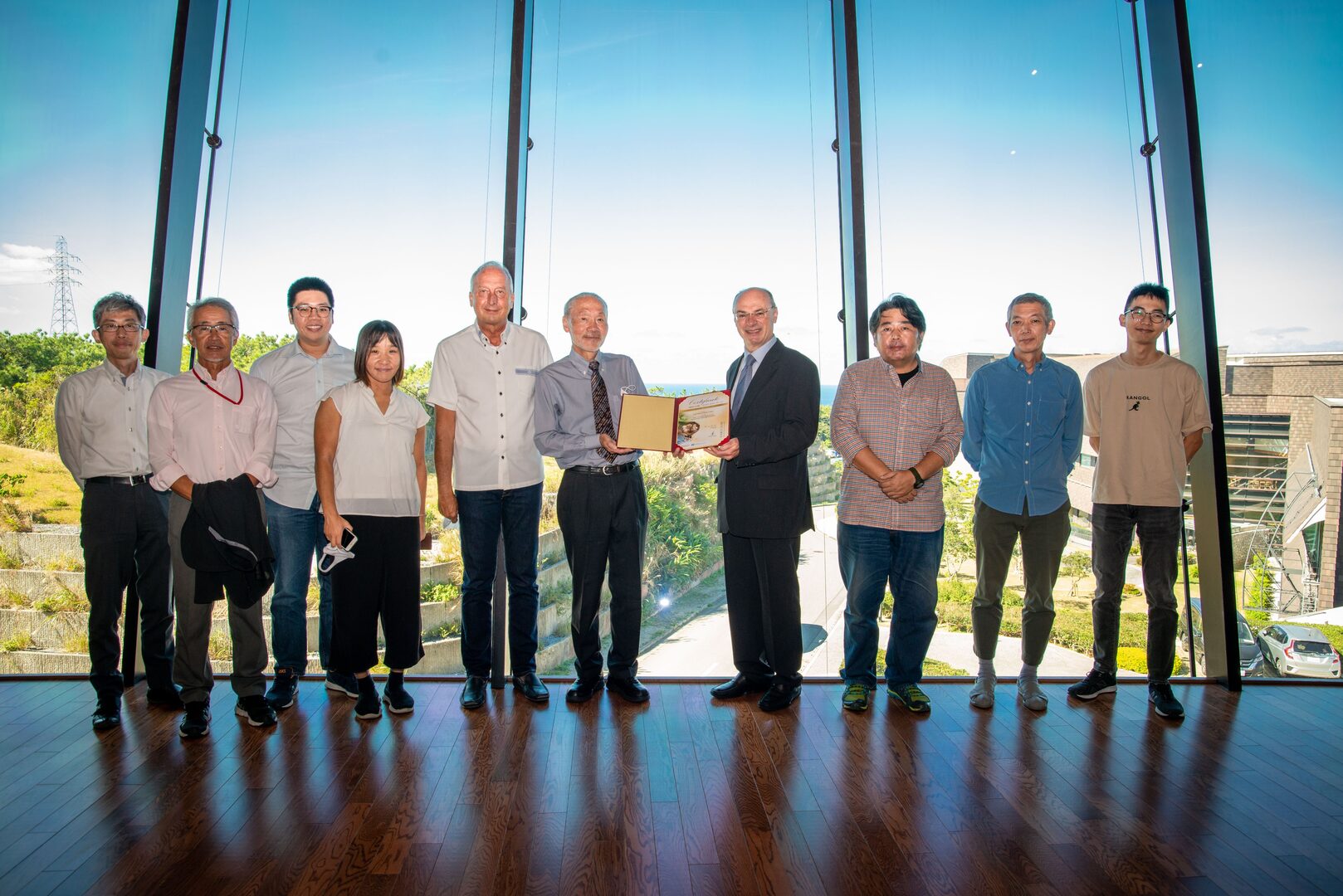
At the start of this year, we published the OIST Strategic Plan 2020 after over a year of intensive effort made by more than 100 OIST members. Ken Peach and his team spearheaded this tremendous project to create a comprehensive document that illuminates our path for the next decade—a solid blueprint for the institution we were created to be. This in an invaluable resource, and I am grateful to all who were involved in its creation as it will guide every decision we make.
2020 also marked the first anniversary of the OIST Foundation, which hosted a virtual Gala with an impressive lineup of speakers in celebration of this milestone. This organization was created to promote OIST, support the development of Okinawa, and deepen partnerships between Japan and the US. In only one year, this organization has diversified our funding, strengthening our science, innovation, local outreach, gender diversity, student initiatives, and even campus wellness. I very much appreciate the work of David Janes and his team and hope you will take some time to read the Philanthropy Impact Report 2020 to learn more.
Government Relations
Next year we will hold our ten-year anniversary, and our development and consistent success over almost a decade have earned us support from numerous Japanese Diet members. Cabinet Minister Taro Kono provides invaluable assistance, and I am especially grateful to the Liberal Democratic Party League for OIST, chaired by Hiroyuki Hosoda, for their steadfast dedication to OIST as well. The effects of COVID-19 have greatly impacted the Japanese economy, and as a result the OIST budget has been heavily scrutinized. However, because of the goodwill we have maintained within the government, today the Cabinet approved a budget of approximately 22 billion yen for OIST in FY2021—a slight increase with 19 billion in base funding and an additional 3 billion in supplemental funding earmarked for further developing our research facilities. Although this does not fully cover the cost of our ambitious plans, I want to thank each and every one of you for your part in maintaining Japan’s confidence in OIST and all we will accomplish.
Innovation
Our mission, formed by the vision of Former Japanese Minister of State for Okinawa and Northern Territories Affairs and Former Minister of State for Science and Technology Policy Koji Omi, is as follows: “We are a pioneering graduate university. We conduct research that bridges disciplines to explore new frontiers of scientific knowledge. We educate a new generation of scientific leaders. We are a catalyst for an innovation hub in Okinawa.” This is OIST—research, education, and innovation. Looking ahead, the third pillar of OIST—innovation—will drive the next stage of our development.
We are building a world-class Innovation Ecosystem in Okinawa. Currently we hold 132 active patents with 120 additional pending. We have directly supported the founding of 6 startup companies, and we have a thriving incubator facility right here on campus. We are also building an increasing number of working relationships with organizations such as the Asia Society, which boasts 11 global locations and is dedicated to promoting partnerships among peoples, leaders, and institutions of Asia and the United States in a global context.
Locally, we are focused on partnerships that will have a direct and constructive impact on the local economy. Earlier this month, we formalized a new partnership with Okinawa City, which builds upon six years of collaboration through the Okinawa City Museum. This new agreement gives Okinawa City further access to OIST research to use for educational programs, and now paves the way for collaborative research to promote nature and environmental issues to local youth. We also signed a memorandum of understanding (MOU) with Ryubo Corporation to promote collaboration in product development and sales promotion for OIST startup companies using new technologies. 2020 also marked the beginning of our intensive collaboration with Hitachi.
The future of OIST is an exciting one, which will diversify the local economy and increase Okinawan prosperity. Four hectares on the south side of our campus are dedicated to becoming a central incubator hub for early stage, high-growth companies from around the world that will benefit from a close connection with our innovative research, educational models, and transformative deep technologies. Very few startups in the world can boast such proximity—both intellectually and physically—to a supporting university. This is our unique advantage at OIST, where startup companies can access resources and advice from a word-leading research community just up the road.
Further ahead in our development plan, in a 100-hectare greenfield just north of our campus, we envision building a smart, sustainable city, which will provide a unique testbed for the world’s most innovative technologies for mobility, cleantech, AI, advanced materials, and health—helping us to realize the tenets of Society 5.0. This will be an entirely new area on campus where people will work and live, and where tourists will come as well to see the groundbreaking work of OIST in person.
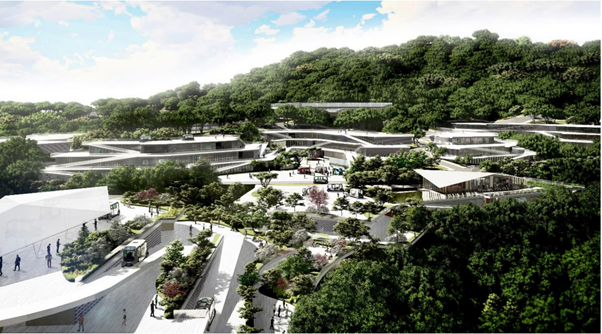
When bringing science into the commercial sphere as we aim to do, we face what is commonly known as the “Valley of Death,” a time in the life of a startup when the important work has begun, but there is little to no revenue to support it. To bridge this gap, venture capital is needed. These funds have to be patient in nature, provided to generate breakthroughs that are often a decade or more in the making over a drive for immediate profit. While venture capital is a common global investment model, it is not yet widely utilized in Japan. However, our goals are international in scope, and to build the breadth of innovation we aim to achieve—through our startup accelerator program, incubation labs, and a world-renown innovation park—we are working to establish a sizeable venture capital fund, separate from Japanese government funding. To this end, we recently invited a select group of global investment leaders to the “International House of Japan” home of our Tokyo Office. With their help, we aim to build the knowledge and funding capital needed to expand our startup support capabilities and fulfil our mission.
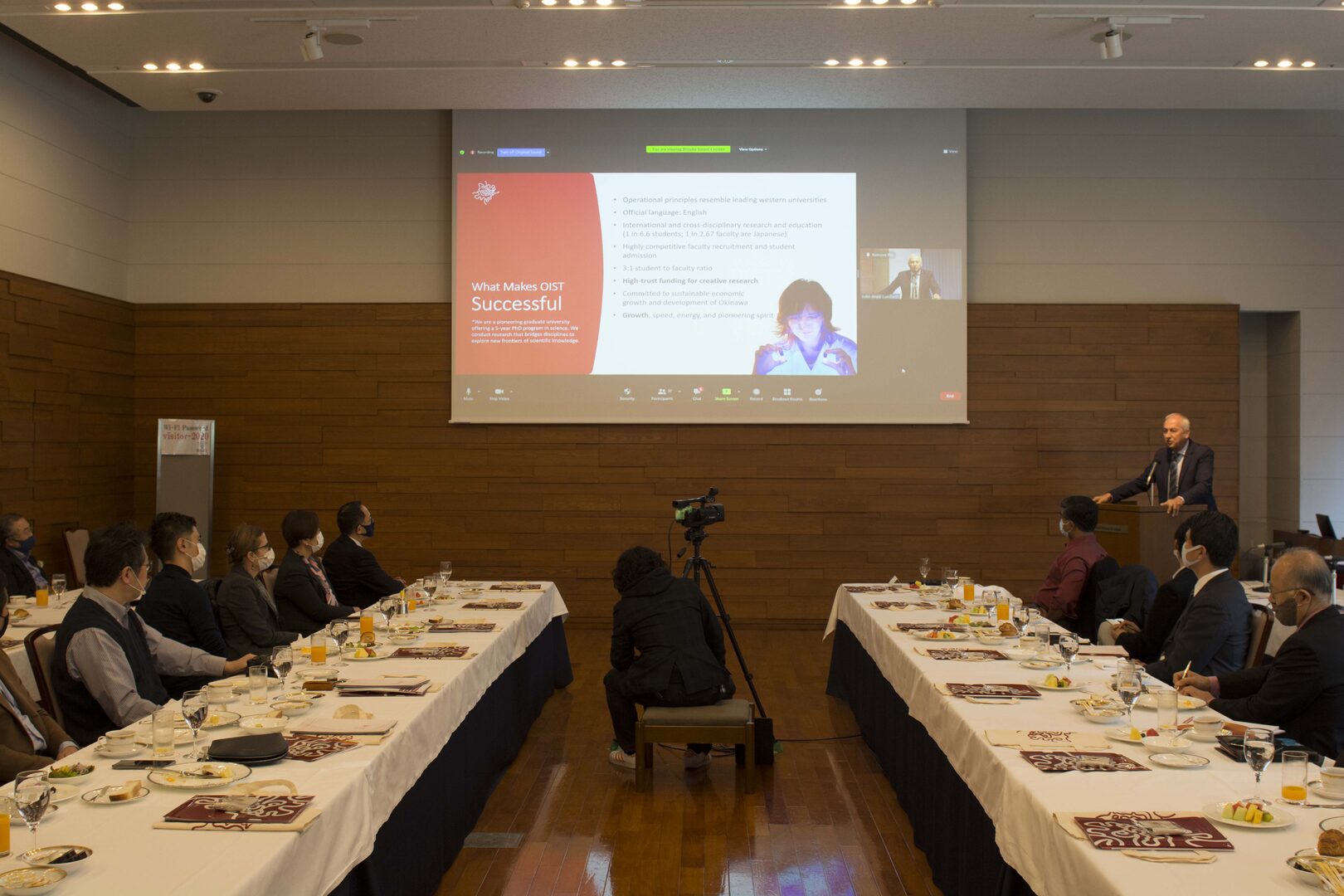
Thank You
2020 has been a year in which OIST has flourished in the face of adversity. Despite the broad range of challenges caused by COVID-19, the work of every OIST staff member—from tenured professor to newly hired temp worker—has led to a significant boost to our recognition and reputation, both locally and globally. This impressive effort made in every corner of OIST, has directly resulted in the continued trust the Japanese Government has placed in us as they work to put our budget in place for the next ten years. It has led to an increased framework of support from sources beyond the Japanese government. And, ultimately, it has bestowed upon us the ability to continue to flourish and attract the best and brightest minds from around the globe as we enter the next stage in our development toward Koji Omi and Sydney Brenner’s ultimate vision for OIST.
I hope you have a restful and rejuvenating New Year Holiday. You have earned it. Once we are all back on campus again, I look forward to hitting the ground running with you and seeing the impressive feats we will accomplish in 2021.
Best regards,
Peter GrussPresident and CEO
Okinawa Institute of Science and Technology



